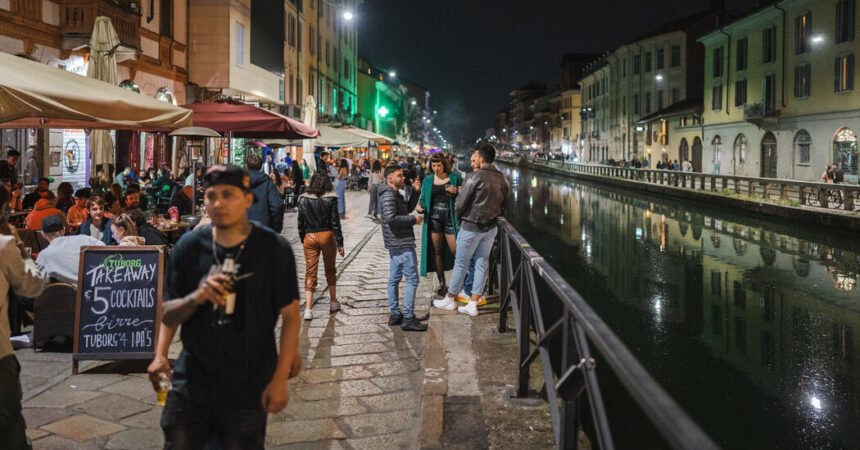[ad_1]
Milan, in an attempt to curb noise and overcrowding due to its thriving nightlife, has passed an ordinance limiting the sale of takeaway food and beverages after midnight. Influenced by continuous complaints and lawsuits, the order will be implemented next week and continue until Nov. 11, impacting Milan’s popular nightlife spots, referred to as “movida” areas.
The ordinance, however stringent, does not apply to consuming gelato while walking after midnight, clarified Marco Granelli, the Milan council member responsible for public security. The rule is primarily designed to control overcrowding caused by takeaway alcoholic drinks.
Businesses and trade associations that have greatly benefited from Milan’s successful transition into an active city are opposing the rule, fearing its implications on late-night commerce.
Residents, however, have been voicing their distress over Milan’s highly active nightlife for some time now. The excessive noise pollution, congested streets and changing neighborhood characteristics due to rising local dissatisfaction, have reportedly turned Milan into a difficult place to live.
The ordinance not only limits the nightlife activities but also proposes to allocate a little over $180,000 to help bar owners hire private security services to prevent street gatherings outside their establishments. Additionally, Milan is planning to modify police contracts to allow more officers to work night shifts for better rule compliance.
Despite these changes, some residents and business owners speculate that enforcement of these new rules could prove challenging. Others view the ordinance as an inadequate means of handling the bottleneck of people that grows beyond the capacity of local law enforcement.
Milan’s transformation from Italy’s industrial capital to a tourist-friendly city has seen rapid development. The city has encouraged development in comparatively less central neighborhoods to cater to the increasing number of national and international students. The nightlife and the face of local neighborhoods have changed substantially in the post-pandemic scenario as bars and restaurants replaced many shops.
Despite the disapproval and skepticism, the city continues to draw large volumes of tourists, with last year marking about 8.5 million visits.
The city’s attempt to control disruptive nocturnal antics, although debatable, marks a significant point in its journey, balancing its historic charm, burgeoning student community, and thriving fashion and design industry.
[ad_2]









